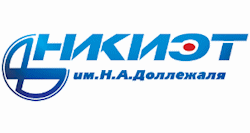NIKIET Dollezhal - Space Reactors
 Russia is actively developing nuclear energy, drawing on the tremendous experience and knowledge accumulated over decades of the national nuclear program. One of the pioneers in creating breakthrough technologies in the country and in the world is the N.A. Research and Design Institute of Energy Engineering Dollezhalya (NIKIET). The Institute’s specialists made an invaluable contribution to the defense capability of our country, developed the designs of the first reactor for producing weapons-grade plutonium, the first reactor installation for a nuclear submarine, and the first energy reactor for nuclear power plants. According to the projects and with the participation of NIKIET, 27 research reactors were created in Russia and abroad.
Russia is actively developing nuclear energy, drawing on the tremendous experience and knowledge accumulated over decades of the national nuclear program. One of the pioneers in creating breakthrough technologies in the country and in the world is the N.A. Research and Design Institute of Energy Engineering Dollezhalya (NIKIET). The Institute’s specialists made an invaluable contribution to the defense capability of our country, developed the designs of the first reactor for producing weapons-grade plutonium, the first reactor installation for a nuclear submarine, and the first energy reactor for nuclear power plants. According to the projects and with the participation of NIKIET, 27 research reactors were created in Russia and abroad.
In 2009, the Commission under the President of the Russian Federation for the Modernization and Technological Development of the Russian Economy decided to implement the project "Creating a transport and energy module based on a megawatt-class nuclear power plant." NIKIET OJSC was identified as the Chief Designer of the reactor installation. The Federal Space Agency issued NIKIET license No. 981K dated August 29, 2008 for space activities.
The Institute is constructing completely new reactors, working on a reactor installation for a unique megawatt-class nuclear propulsion system for a spacecraft that has no world analogs. The creation of this installation is a complex work of the State Research Center Federal State Unitary Enterprise “Keldysh Center”, OJSC RSC Energia, KBKhM named after A.M. Isaev and enterprises of Rosatom State Corporation. The Institute has been identified as the sole contractor for the reactor installation and identified as the coordinator of work from Rosatom organizations. The work is really unique, there are no analogues today, so it goes quite difficult. Since it is a design organization, there are certain steps, stages, and it goes through them step by step.
By 2013 there was a fairly wide cooperation, more than three dozen organizations are involved in the development of a reactor installation project. All agreements on this topic have been concluded. Unfortunately, as elsewhere on all subjects, the contracts are concluded for a period of one year. The conclusion process is stretched, and, taking into account the time for competitive procedures, in fact, they eat time.
The structure of the reactor installation includes a nuclear reactor and the systems necessary for generating heat, as well as for controlling the reactor and protecting it. The aim of the project is to ensure Russia's leading position in the development of highly efficient energy systems for space applications, which qualitatively increase their functional capabilities.
Technical solutions inherent in the concept of the transport and energy module will make it possible to solve a wide range of space tasks, including moon research programs and research missions to distant planets, the creation of automatic bases on them. The project is implemented jointly by Rosatom and Roscosmos enterprises. NIKIET is the chief designer of the reactor installation and the coordinator of work from Rosatom.
NIKIET starting to test a full-scale simulator of the so-called basket of the reactor core (in the real core there is nuclear fuel and reactor controls and protections). The simulator, made of a refractory molybdenum alloy, in 2015 successfully passed the control assembly at another enterprise of Rosatom Research Institute of NPO "Luch" (Podolsk, Moscow Region).
| USSR | USA | |
| period of active actions on the topic | 1961-1989 | 1959-1972 |
| Spent funds, billion $ | ~ 0.3 | $ ~ 2.0 |
| Number of manufactured reactor plants | 5 | 20 |
| Fuel composition | UC-ZrC, UC-ZrC-NbC | Solid solution UC 2 in a graphite matrix |
| Core heat intensity, average / maximum, MW / l | 15/33 | 2.3 / 5.1 |
| Maximum achieved temperature of the working fluid, | K 3100 | K 2550 2200 |
| Specific impulse of thrust, s | ~ 940 | s ~ 850 |
| Service life at the maximum temperature of the working fluid, | s 4000 | s 50 2400 |
|
NEWSLETTER
|
| Join the GlobalSecurity.org mailing list |
|
|
|

